Kosovo’s cultural heritage is a rich tapestry that invites exploration. From the National Museum‘s captivating exhibits to the UNESCO-listed monasteries, the country’s monuments and museums offer a window into its storied past. Explore the Ethnographic Museum‘s insights on traditional lifestyles, or uncover the Byzantine artistry of Decani Monastery. Whether it’s the patriotic Newborn Monument or the evocative Ulpiana ruins, Kosovo’s cultural treasures promise to stimulate the mind and stir the senses. There’s much more to discover about this fascinating corner of the world.
Key Points
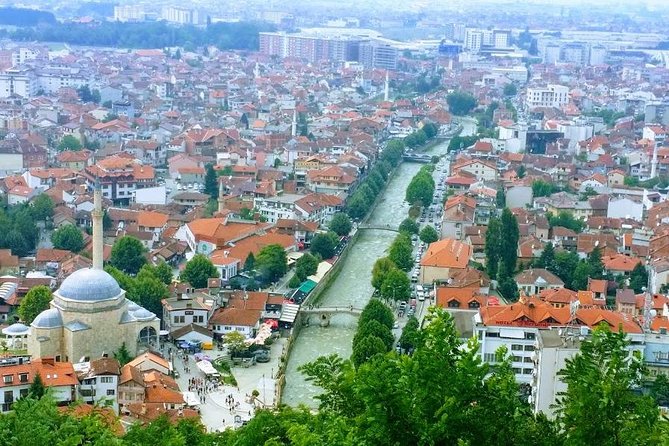
- Kosovo’s cultural heritage is reflected in its ancient archaeological sites, medieval monasteries, and diverse religious architectural styles.
- Pristina and Prizren host museums that showcase Kosovo’s history, traditions, and identity through archaeological artifacts, folk costumes, and educational exhibits.
- Architectural gems in Prizren, such as the Fortress and Sinan Pasha Mosque, illustrate the region’s rich cultural influences and strategic historical significance.
- Decani Monastery and Gracanica Monastery, both UNESCO World Heritage sites, showcase the country’s renowned Byzantine-era frescoes and architectural splendor.
- Kosovo’s patriotic monuments, like the Newborn Monument and Skanderbeg Statue, commemorate the nation’s pivotal moments and celebrate its complex history and aspirations.
Kosovo’s Cultural Treasures

Kosovo’s cultural treasures span centuries, offering visitors a captivating glimpse into its rich history and diverse heritage.
From ancient archaeological sites to medieval monasteries, Kosovo’s landscape is dotted with remarkable cultural landmarks.
Pristina’s historic Ottoman-era mosques and the iconic Gracanica Monastery, a UNESCO World Heritage site, showcase the region’s diverse religious influences.
In the southern town of Prizren, the Fortress of Prizren stands as a testament to the region’s strategic importance throughout history.
These cultural gems provide invaluable insights into Kosovo’s past, inviting travelers to enjoy the country’s unique identity and traditions.
You can also read our reviews of more historical tours in Pristina
Exploring Pristina’s Museum Scene
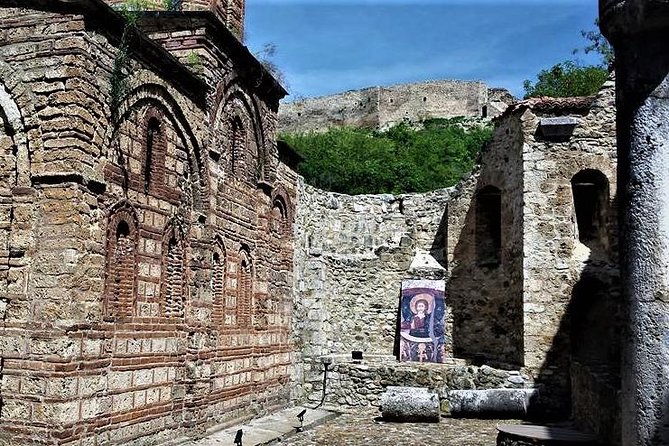
Pristina, the vibrant capital of Kosovo, offers visitors a captivating array of museums that shed light on the country’s rich cultural heritage.
The National Museum of Kosovo is a must-visit, housing an impressive collection of archaeological artifacts, including ancient coins, ceramics, and textiles.
The Ethnographic Museum showcases traditional Kosovo way of life, with exhibits on folk costumes, crafts, and agricultural tools.
The Museum of Kosovo provides insights into the region’s tumultuous history, with displays on the Yugoslav era and the Kosovo War.
These institutions offer travelers an opportunity to enjoy Kosovo’s diverse cultural tapestry and gain a deeper understanding of the country’s identity.
Prizren’s Architectural Gems
Nestled along the banks of the Bistrica River, the historic city of Prizren captivates visitors with its stunning architectural gems.
The iconic Prizren Fortress, perched atop a hill, offers panoramic views of the city and its mix of Byzantine, Ottoman, and Neoclassical structures.
The Sinan Pasha Mosque, with its elegant minarets, is a testament to the region’s Islamic heritage.
Nearby, the Church of Our Lady of Ljeviš, a UNESCO World Heritage site, showcases a harmonious blend of Gothic and Byzantine architectural styles.
These well-preserved landmarks provide a window into Kosovo’s rich cultural tapestry, inviting travelers to enjoy the country’s storied past.
Decani Monastery’s Byzantine Splendor
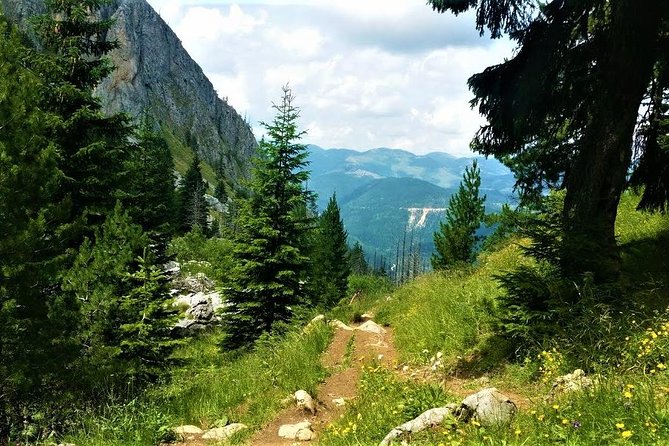
Beyond the historic city of Prizren, Kosovo’s cultural tapestry extends to the awe-inspiring Decani Monastery, a UNESCO World Heritage site renowned for its Byzantine splendor.
This 14th-century Serbian Orthodox monastery boasts exquisite frescoes, intricate stone carvings, and an architectural style that seamlessly blends Eastern and Western influences.
Visitors can explore the monastery’s serene courtyards, admire the impressive bell tower, and gain insight into Kosovo’s rich religious heritage.
The Decani Monastery stands as a testament to the country’s enduring cultural legacy, offering a captivating glimpse into its storied past.
Its preservation and ongoing restoration efforts ensure this treasured landmark continues to inspire and enlighten travelers from around the world.
Interpretation of Ulpiana Ruins
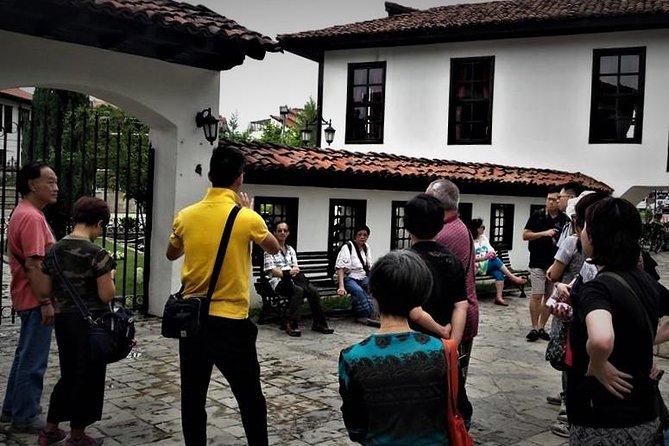
Amidst the rolling hills of Kosovo, the ruins of Ulpiana stand as a testament to the region’s rich archaeological heritage. This expansive site, dating back to the 2nd century AD, offers visitors a captivating glimpse into the Roman and Byzantine eras. Through careful interpretation and excavation, experts have unearthed a wealth of ancient structures, including a forum, basilica, and thermae. The site’s significance is further underscored by its designation as a UNESCO World Heritage tentative site. As visitors explore the ruins, they are transported back in time, immersed in the vibrant history that once thrived within these walls.
| Ulpiana Ruins | Description |
|---|---|
| Roman Forum | Central gathering place for civic life |
| Byzantine Basilica | Imposing religious structure |
| Ancient Thermae | Well-preserved Roman baths |
| UNESCO Tentative Site | Recognition of cultural significance |
| Excavation and Interpretation | Ongoing efforts to uncover the past |
You can also read our reviews of more museum experiences in Pristina
Gračanica Monastery’s Frescoes
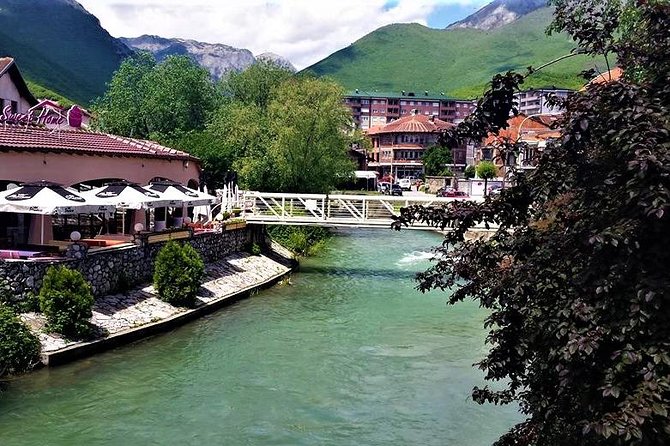
The Gračanica Monastery, a UNESCO World Heritage site, is renowned for its exquisite frescoes that adorn the interior walls and ceilings.
Commissioned in the 14th century, these masterful paintings depict biblical scenes and saints, showcasing the remarkable skill of the artists.
Visitors can admire the vivid colors, intricate details, and harmonious compositions that have withstood the test of time.
The monastery’s frescoes embody the cultural and artistic heritage of Kosovo, offering a glimpse into the region’s rich history and devotion to religious art.
Exploring these captivating works provides an immersive experience, allowing travelers to connect with the spiritual and artistic legacy of this remarkable site.
Discovering Patriotic Monuments
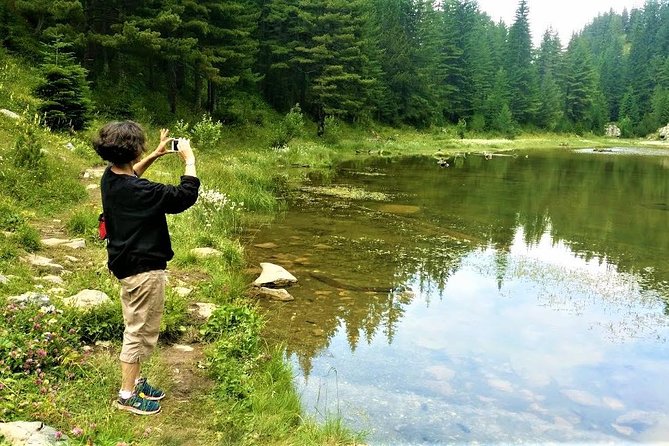
Kosovo’s cultural heritage is further enriched by its numerous patriotic monuments, which stand as poignant testaments to the nation’s resilience and aspirations.
Scattered throughout the country, these memorials commemorate pivotal moments in Kosovo’s history, serving as powerful symbols of national identity.
Visitors can explore the iconic Newborn Monument in Pristina, a towering steel structure unveiled in 2008 to mark the declaration of Kosovo’s independence.
Other notable monuments include the Dušan’s Fortress in Prizren, honoring the medieval Serbian ruler, and the striking Skanderbeg Statue in Pristina, celebrating the legendary Albanian hero.
These patriotic landmarks offer a profound insight into Kosovo’s complex past and its ongoing journey towards a stronger, more unified future.
The Sum Up
Kosovo’s cultural heritage is a captivating tapestry of historical influences, showcased through its diverse museums and monuments. From the National Museum’s insights into the region’s past to the UNESCO-listed monasteries‘ Byzantine artistry, visitors can enjoy Kosovo’s rich heritage. Patriotic monuments, like the Newborn Monument, also reflect the nation’s complex history and aspirations. Kosovo’s cultural treasures offer a unique opportunity to discover its fascinating story.
More Museum Experiences in Pristina
More Historical Tours in Pristina
More Tour Reviews in Pristina
Not for you? Here's more nearby things to do in Pristina we have reviewed
- Private Walking Tour from Mother Theresa Cathedral in Pristina
- Prizren Walking Tour: Explore the Heritage of Open Museum City
- Prizren & Prishtina Private Tour Culture, Views & History
- The best of Pristina walking tour
- Classical Tour of Kosovo
- From Pristina to Prizren-Gjakova-Peja DAILY TOUR
- Prishtina: Guided Walking Tour with a Local
- Pristina: Day Tour with Bear Sanctuary and Gadima Cave
- Kosovo: Bear Sanctuary Prishtina, (guided tour & shuttle)
- Prishtina: Peja & Rugova Adventour Tour
- From Skopje: Prizren and Pristina, opt Kukes, Albania, a day
- From Skopje: Pristina Day Trip
